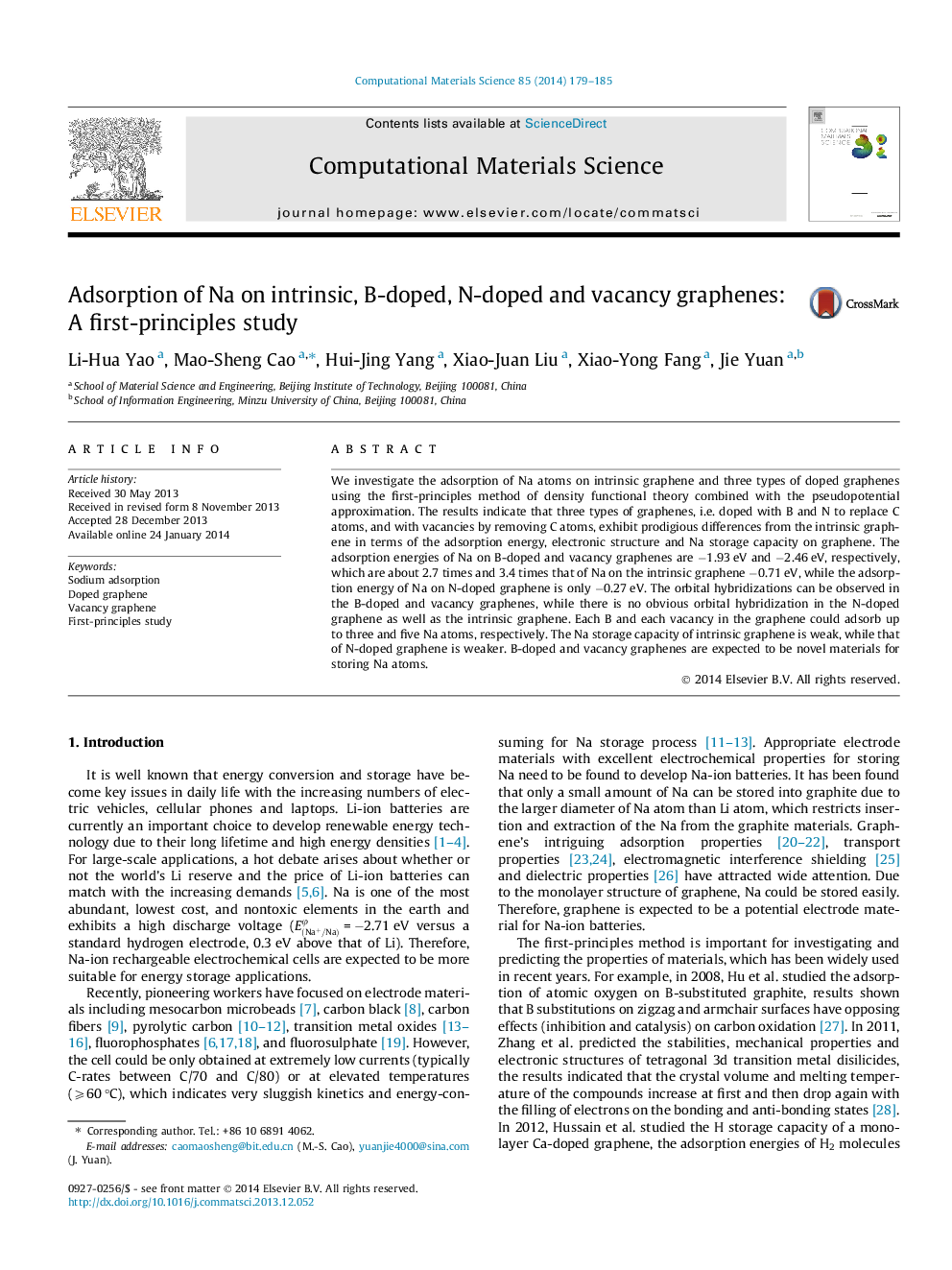| Article ID | Journal | Published Year | Pages | File Type |
|---|---|---|---|---|
| 1560992 | Computational Materials Science | 2014 | 7 Pages |
Abstract
We investigate the adsorption of Na atoms on intrinsic graphene and three types of doped graphenes using the first-principles method of density functional theory combined with the pseudopotential approximation. The results indicate that three types of graphenes, i.e. doped with B and N to replace C atoms, and with vacancies by removing C atoms, exhibit prodigious differences from the intrinsic graphene in terms of the adsorption energy, electronic structure and Na storage capacity on graphene. The adsorption energies of Na on B-doped and vacancy graphenes are â1.93Â eV and â2.46Â eV, respectively, which are about 2.7 times and 3.4 times that of Na on the intrinsic graphene â0.71Â eV, while the adsorption energy of Na on N-doped graphene is only â0.27Â eV. The orbital hybridizations can be observed in the B-doped and vacancy graphenes, while there is no obvious orbital hybridization in the N-doped graphene as well as the intrinsic graphene. Each B and each vacancy in the graphene could adsorb up to three and five Na atoms, respectively. The Na storage capacity of intrinsic graphene is weak, while that of N-doped graphene is weaker. B-doped and vacancy graphenes are expected to be novel materials for storing Na atoms.
Related Topics
Physical Sciences and Engineering
Engineering
Computational Mechanics
Authors
Li-Hua Yao, Mao-Sheng Cao, Hui-Jing Yang, Xiao-Juan Liu, Xiao-Yong Fang, Jie Yuan,
